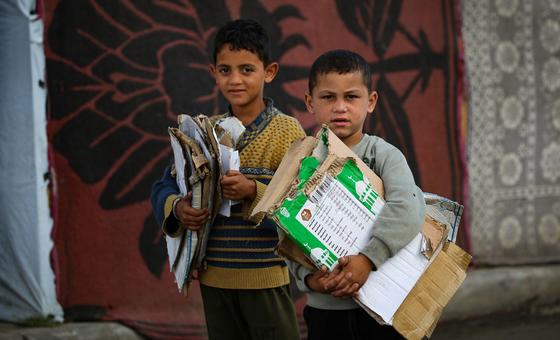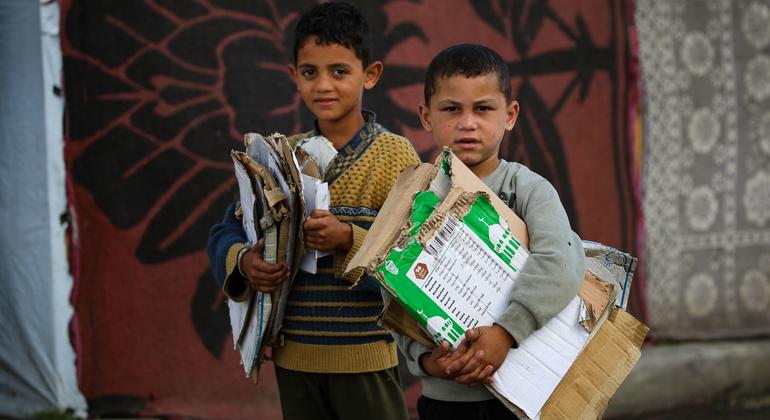
Details of that development and the “unprecedented devastation” to the Palestinian jobs market and the wider economy beyond Gaza and the West Bank are outlined in a new report from the ILO.
Ahead of its publication, the UN agency’s Director-General Gilbert Houngbo told the 112th International Labour Conference in Geneva on Thursday that the labour market in Gaza had “literally collapsed” since “horrific” Hamas-led terror attacks against Israel last October, that sparked Israel’s “relentless war”.
“Today Gaza is in ruins. Livelihoods are shattered and work is scarce. Labour rights have been decimated,” he said. “This has been the hardest year for Palestinian workers since 1967. Never before has the situation been this bleak.”
Hard data
According to data crunched by the ILO and the Palestinian Central Bureau of Statistics, unemployment in the Gaza Strip has reached 79.1 per cent.
Although not directly impacted by the war, the occupied West Bank has also been severely impacted by the crisis, with almost one in three unemployed.
“These figures bring the average rate of unemployment to 50.8 per cent across the two areas of the OPT,” said the authors of The situation of Workers in the Occupied Arab Territories, before noting the true figure was likely even higher as it did not include individuals who had left the labour force altogether because of a lack of opportunities.
Unsurprisingly, overall economic output in Gaza has contracted by 83.5 per cent and by 22.7 in the West Bank over the past eight months, while the entire OPT economy has shrunk by nearly 33 per cent.
Health relief breakthrough
In related developments in Gaza on Friday, the UN health agency announced despite “significant constraints”, one fully-laden truck and a partially stacked trailer carrying medical relief had reached Gaza via the southern crossing of Kerem Shalom.
“The supplies will be distributed to health facilities to support the treatment of up to 44,000 people,” the World Health Organization (WHO) said in a post on X.
The assistance comprises treatments for noncommunicable diseases such as hypertension and cardiac conditions, type 2 diabetes, and chronic respiratory diseases but much more relief is needed urgently via the still-closed Rafah crossing, the UN health agency insisted.
In a separate update, the WHO reported that 464 attacks on healthcare in the Gaza Strip have been documented since 7 October.
“Attacks have resulted in 727 fatalities, 933 injuries, affected 101 health facilities and 113 ambulances,” the World Health Organization (WHO) said in another post on X.
“Two-fifths (37 per cent) of attacks were in Gaza City, nearly a quarter (23 per cent) in north Gaza, and over a quarter (28 per cent) in Khan Younis. WHO calls for the respect of international law and active protection of civilians and health care,” the UN agency insisted.
Rafah
In Rafah, fewer than 100,000 people now remain across the southern governorate, the UN aid coordination office, OCHA, reported late Thursday.
This follows the forced evacuation “of about a million people – who were again on the run” and moving toward Khan Younis and Deir al Balah, OCHA said, adding that the ongoing hostilities had massively disrupted the delivery of lifesaving relief.
The halt to fuel deliveries via Rafah crossing from Egypt had multiple negative ramifications, the UN aid office explained, as it affected “trucks, hospitals, sewage systems, desalination operations and bakeries”.
“As things stand, aid convoys still need to navigate active hostilities, barely passable roads, unexploded ordnance, and recurrent delays,” OCHA said.



